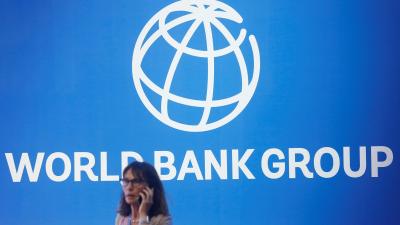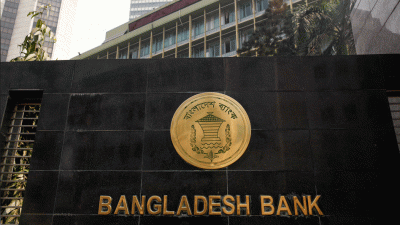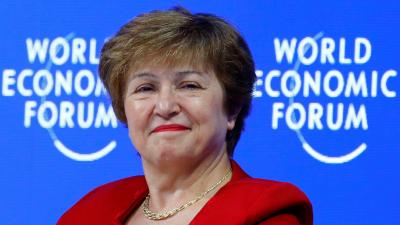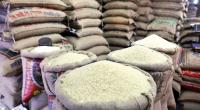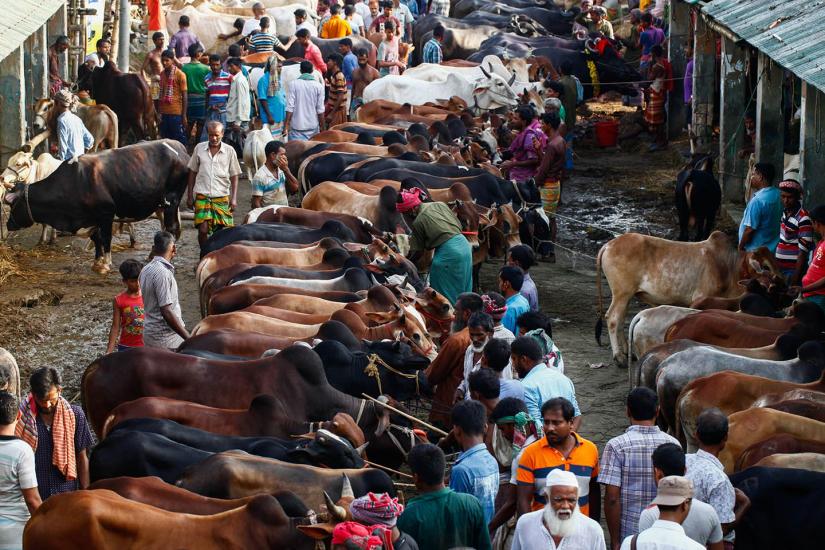 Bangladesh, once highly dependent on Indian cattle, today is almost self-reliant in meeting its own demand, even when millions of cattle are slaughtered across Bangladesh during the religious festival of Eid-ul-Azha.
Bangladesh, once highly dependent on Indian cattle, today is almost self-reliant in meeting its own demand, even when millions of cattle are slaughtered across Bangladesh during the religious festival of Eid-ul-Azha.
According to the Department of Livestock Services (DLS), 11.18 million livestock are being reared across the country mainly to be sold for the Eid-ul-Azha celebrations.
The number of locally reared cattle includes - 4.58 million cows and buffaloes, 7.20 million goats and sheep, and hundreds of other sacrificial animals – now available at hand, DLS officials said.
Md Mahbubur Rahman, director (production) of DLS said, in 2014 after India imposed a ban on the export of cows, farmers in Bangladesh earned a huge profit by selling cattle at the time of Eid-ul-Azha, which encouraged them to start the business on a larger scale.
“On Friday I went to two cattle markets- Kaula and Tejgaon- and was astonished to see cows in multitude, if there is no artificial crisis, there will be no shortage this year. Rather, many farmers might have to return with their unsold cows,” he added.
Bangladesh is attaining self-sufficiency in meat production, as cattle imports and its entry from neighboring India, and Myanmar has reduced significantly.
Ban on cattle export
India's ban on cattle export helped Bangladesh attain self sufficiency. A large number of farmers, and traders got involved in cattle rearing, reducing the dependency on imported animals, they added.
Cattle production has witnessed a significant growth in recent times because of its demand, and considerable market price, Md Mahbubur Rahman said.
The government's initiative to create self-employment led many graduates to get engage in cattle trade as it is less risky, needs small investment, and space.
The sector is creating employment opportunities for about 5 lakh people each year, while 20% of the country’s total employment directly depends on the livestock sector, DLS said.
Daya of the department says, in 2018 there were 4,42,991 farms which produced 28,14,248 cows, this year the number has increased to 28,85,142.
An estimated 2.4 to 2.5 million Indian cows used to enter Bangladesh illegally, but there is no official figure on it yet.
The latest data compiled by Border Guard Bangladesh shows, around 23lakh cows entered Bangladesh in 2013, while this year, till May, only 75,696 cows entered via the corridors, and the country earned Tk37,61,850 from it.
Prospects bright
Mahbubur Rahman believes that Bangladesh is no longer dependent on neighboring countries for meat production, rather it is planning to export if the present growth continues.
“India is exporting cows to many countries, we also see a bright prospect for this business. There are some international issues like- if we can vaccinate our cows properly, and ensure ban on steroid use. We can explore the opportunity,” he added.
According to a report published by the Food and Agricultural Agency of the United Nations in 2017, Bangladesh secured fourth position in goat meat production.
 Business
Business
41305 hour(s) 7 minute(s) ago ;
Evening 08:01 ; Thursday ; Jul 03, 2025
India's ban on cattle export: A blessing for Bangladesh
Send
Syed Samiul Basher Anik
Published : 06:00, Aug 10, 2019 | Updated : 06:00, Aug 10, 2019
Published : 06:00, Aug 10, 2019 | Updated : 06:00, Aug 10, 2019
0 ...0 ...
/hb/
Topics: Top Stories
- KOICA donates medical supplies to BSMMU
- 5 more flights to take back British nationals to London
- Covid19: Rajarbagh, Mohammadpur worst affected
- Momen joins UN solidarity song over COVID-19 combat
- Covid-19: OIC to hold special meeting
- WFP begins food distribution in Cox’s Bazar
- WFP begins food distribution in Cox’s Bazar
- 290 return home to Australia
- Third charter flight for US citizens to return home
- Dhaka proposes to postpone D8 Summit
Unauthorized use of news, image, information, etc published by Bangla Tribune is punishable by copyright law. Appropriate legal steps will be taken by the management against any person or body that infringes those laws.
Bangla Tribune is one of the most revered online newspapers in Bangladesh, due to its reputation of neutral coverage and incisive analysis.
F R Tower, 8/C Panthapath, Shukrabad, Dhaka-1207 | Phone: 58151324; 58151326, Fax: 58151329 | Mob: 01730794527, 01730794528

